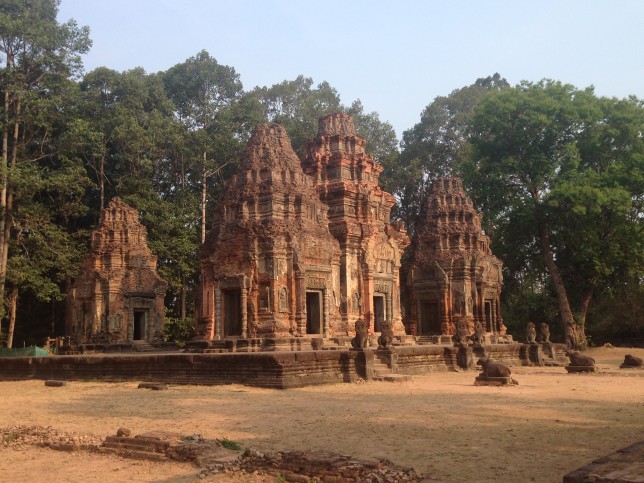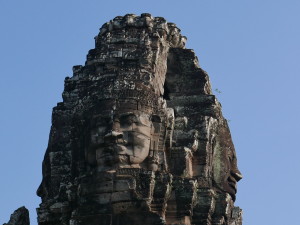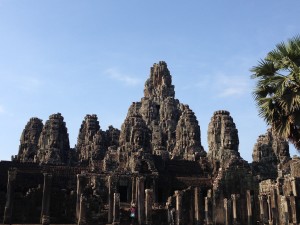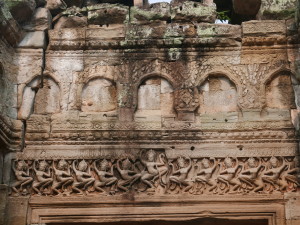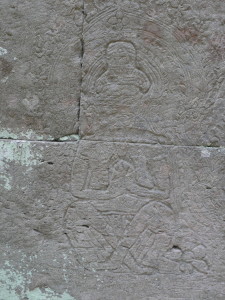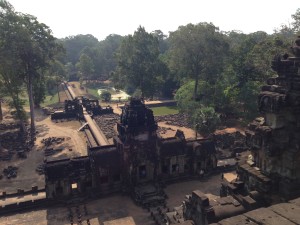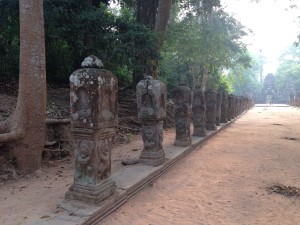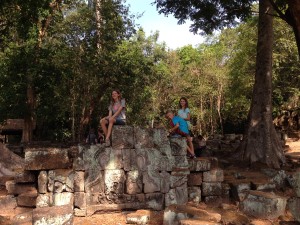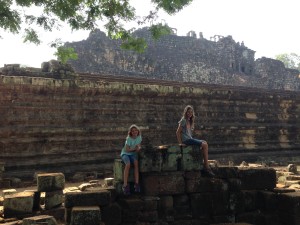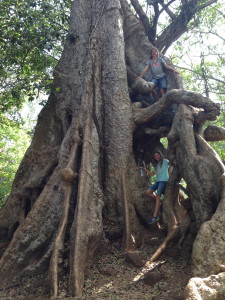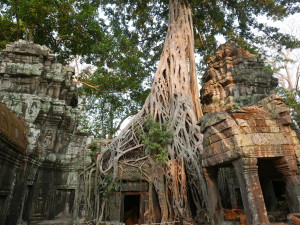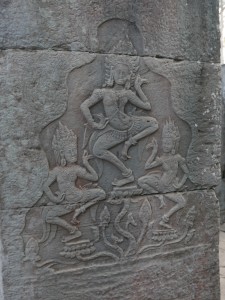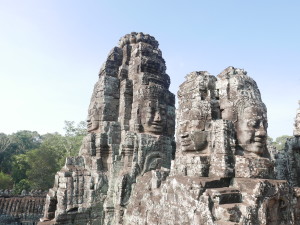So we’ve had Sacha’s very enthusiastic (!) take on Angkor Wat. Just to fill in the gaps, 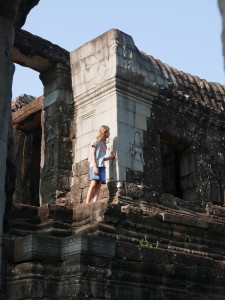 here’s a quick round-up of some of the rest of it. I’ll try – despite my boring historical
here’s a quick round-up of some of the rest of it. I’ll try – despite my boring historical
enthusiasm – not to do it in exhaustive detail (I’m sure that holiday snaps of ruins fall way, way below pictures of pretty much everything else..), here’s a bit of a rundown on the enormity of the Angkor complex. I was lucky enough to visit 5 times, the kids gratefully (resentfully?) went only 4, and even with those visits, we didn’t see it all. I promise I’m not going to bore on, but here are just a few things that struck me.
All of the different complexes were built between the 900s and the 1300s, after which the center of power in the region shifted to Thailand. Before that, Cambodia was the big cheese in the region, subjugating people in Thailand, Laos and Myanmar to their rule. As in most empires, so kings stood out for their all-around fabulousness, military might, and ability to build vast temples as homage to their gods, and – in the case of Bayon – themselves. Thus, 3 main kings were the most important in creating the huge Angkor complex, with Jayavarman VII (aka the probable face of the 216 faces of Bayon temple), the head-honcho builder.
Cambodia is a Buddhist country now, with no Hindus to be seen, but it wasn’t always thus. The early temples were constructed as Hindu; both Shiva and Vishnu were followed, but the construction of Angkor Wat as a Vishnu temple led to a split from the Shiva-dominant temples of the past. Then, when mega-builder Jayavarman VII came along, he switched to Buddhism, and built Angkor Thom and Bayon in the Buddhist style. After his death, the country reverted to Hinduism, and everywhere you look you can find spaces where the Buddhas had been removed; statues with Buddhist heads lopped off, and carvings where the Buddhist cross-legged style has been (usually not so successfully) altered to a more Hindu pose. See below for holes and legs…
These guys were just the early looters. The French later turned up and carted off many, many treasures to the Musee Guimet in Paris. Then it was your common or garden stone-transporters / exporters. After that, the Khmer Rouge turned up in their tanks: you can still see where the track marks crushed some of the stone and Angkor Wat, and some bullet holes. Ponheary and our first guide were some of the early tour guides when the site was being cleared of mines, as they had been imprisoned by the KR (and seen people killed) in the very area, so they knew it – and mine locations – very well.
We were lucky when we visited to catch some moments of relative tranquility, as Khmer New Year was in full swing, which meant that hundreds of thousands of Cambodians were descending on the site every day, to cook, picnic, swim and party. The corrupt and (probably justifiably) paranoid prime minister came to do a speech, resulting in endless barricades and security. It was fun, and chaotic and a tiny bit bonkers – crazy-loud music being blasted out across the serene faces of the Buddhas the carved dancing ladies and the imperturbable elephants.
